Square Enix frequently gets by on fan service, which is probably the best way to describe their 3D, Unreal-engine-powered remake of Trials of Mana.
Originally released only in Japan as Seiken Densetsu 3 on the Super Famicon in 1995, the game reached near-mythical status in the U.S. — largely because it was only available through importers. Twenty-five years later, even with the complete graphic overhaul present here, the game feels like a historical artifact.
Whether it’s an essential artifact depends a lot on your love of the classic JRPG genre. The original Trials of Mana has several elements that make it distinctive from its contemporaries, but a lot has happened since then.
Trials of Mana Review: Nostalgia Revamped
Officially, Trials of Mana is about a grand adventure to revive and heal the Goddess of Mana, who is a sleeping tree. It seems after she defeated evil way back when and changed form to rest, evil eventually started seeping through the cracks. So, someone has to go defeat eight giant monsters, the benevodons, to collect eight magical stones, which in turn will enable the Goddess to recreate a giant magical weapon (the Sword of Mana) to heal the world.
That’s all well and good (if heaped with cliches), but what the game is really about is running through a fairly spacious open-world collecting shiny things people just drop everywhere, as well as killing absurdly cute woodland animals.
While Dragon Quest has its share of adorable blobs to murder, nearly every “monster” here seems to have escaped a Pixar movie only to find itself in a nightmarish murder simulation.
Why the game wants us to kill so many fluffy round bunnies, for instance, is a mystery. This is a JRPG, so their lives are mere fodder for the player’s constant need to grind and grind and grind!
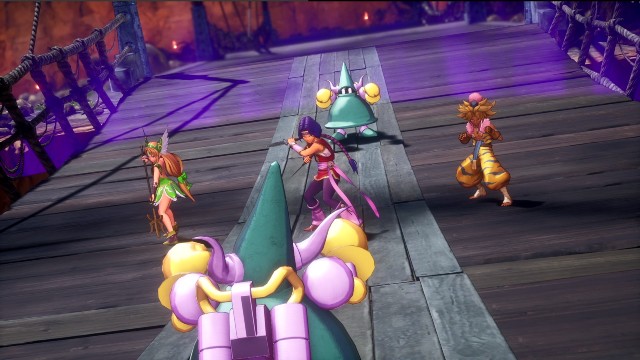
Combat in Trials of Mana is real-time and very action-centered. Like the bulk of the game, it feels dated and somewhat simplistic. Each character has their main weapon, capable of light and heavy attacks, in addition to charging up for more powerful blows and AoEs. There are also items and spells to utilize during combat, and you can switch between characters anytime (whether in a fight or not), but fights seldom feel like much more than bash fests.
The AI of both monsters and companions is pretty suspect. In general, your partners are useful in combat, but not particularly bright or quick. It always feels like fights are entirely reliant on you. Monsters attack mechanically, so once you get a handle on their moves, they’re easy enough to defeat.
The biggest problem with the Trials of Mana combat system is the incredibly awful targeting system, which seems to go out of its way to pick the least convenient enemy to focus on. Working in conjunction with the sketchy auto-camera, at times, the game acts like it’s trying to kill you through inconvenience.
The camera is usually freely controllable and tapping the targeting button flips to another enemy, but being forced to manually adjust them so often causes slight and annoying breaks in the flow of combat.
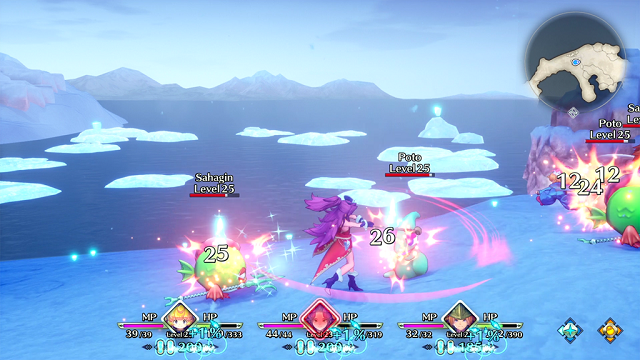
The game’s multi-class system enables you to configure characters in diverse ways and create powerhouse tanks that can plow through any enemy (even the giant Benevodon boss creatures).
Once a character reaches Level 18 (and again at Level 38) and has fulfilled certain adventuring criteria, they can advance to a more powerful class. The new classes available for each character are more an evolution of their starting class, but they are divided between “light” and “dark” roles.
Hawkeye the thief, for instance, can advance to become a ranger (light) or a ninja (dark) at Level 18. At the third tier, there are four choices to choose from, each with specific tactics and powers. The class you pick affects not just a character’s abilities and attack styles, but their physical appearance as well.
It’s also a permanent change. These choices don’t necessarily change the narrative of the game, but they do add a deeper layer of customization and are well-worth pursuing for the power advantage they provide.
The storyline is spread between the game’s six characters as well, making multiple playthroughs with different character combinations worthwhile. You’ll have to play through several times to see all the possible storylines, as once you select your three party characters at the start, you’re stuck with them for the duration of the game.
You’ll encounter the other characters along the way, but even when it seems logical that one of them joins your party at least temporarily, they can’t. It’s an antiquated way to handle branching storylines but adds a distinct flair to the overall classic, trope-filled adventure.
Trials of Mana Review — The Bottom Line
Pros
- Charmingly redone graphics
- Multiple character storylines
- Perfect for an old-school fix
Cons
- Terrible targeting system
- Sketchy camera
- Might feel too old-school for some
If you want to play the original 16-bit version of Trials of Mana, it’s already out there as part of the Collection of Mana. The storyline, characters, locales, and most of the mechanics are largely the same.
This new version of Trials really is the classic game dressed up in sharp, if not amazing modern graphics. The game isn’t as graphically impressive as Dragon Quest 11 and suffers from noticeable framerate jitters at times, but the soundtrack is still delightful.
Trials of Mana isn’t really competing with the slew of much more recent JRPGs, but it’s certainly solid enough to scratch that itch between other major releases. It’s a fun trip through a very familiar-feeling fantasy world, but unlikely to make anything close to the impact of its legendary predecessors.
For the retro purist, the Collection of Mana’s authentic port is probably a more favorable choice. For those just looking for a more pixel-free variation on a classic, however, Trials of Mana is worth a look. It’s an entertaining if forgettable trip down memory lane dressed up in bright, colorful modern graphics.
[Note: A copy of Trials of Man was provided by Square Enix, Ltd. for the purpose of this review.]
[The company, product, and system names shown here are trademarks or registered trademarks of their respective owners. This content contains copyrighted material owned by Square Enix Co., Ltd. Re-publishing or distribution is prohibited. © 1995, 2019, 2020 SQUARE ENIX CO., LTD. All Rights Reserved.]

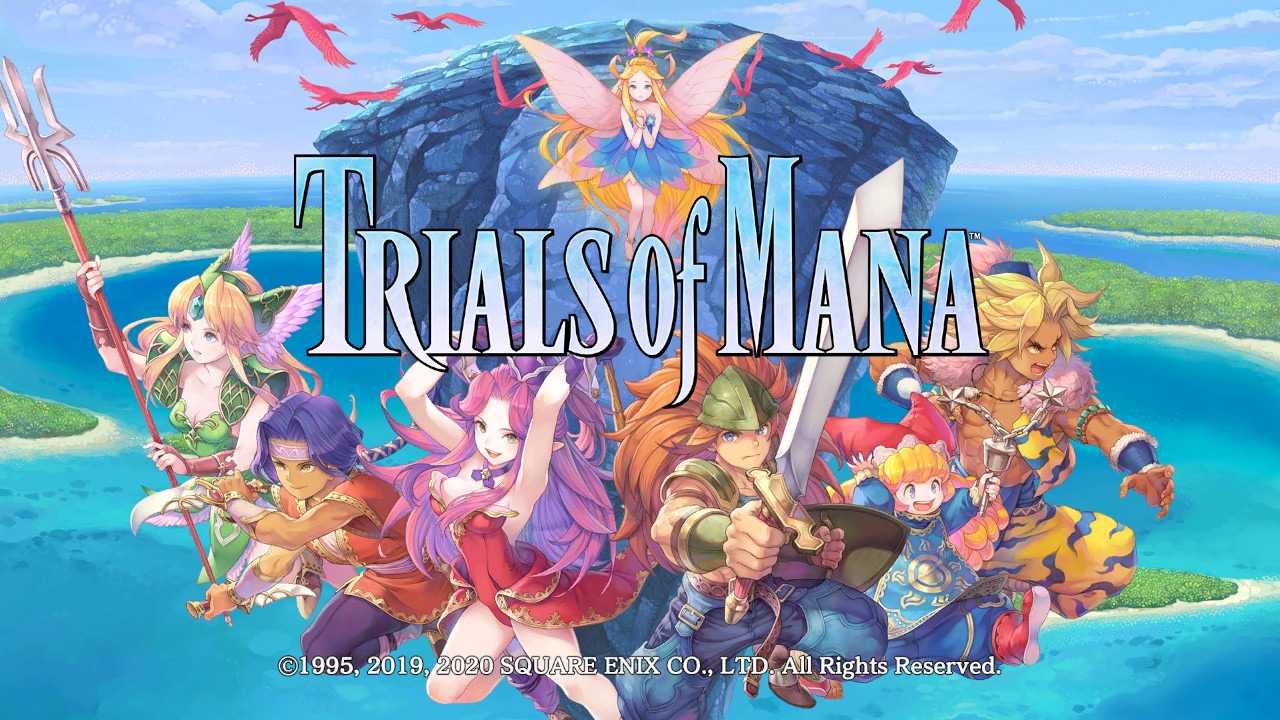
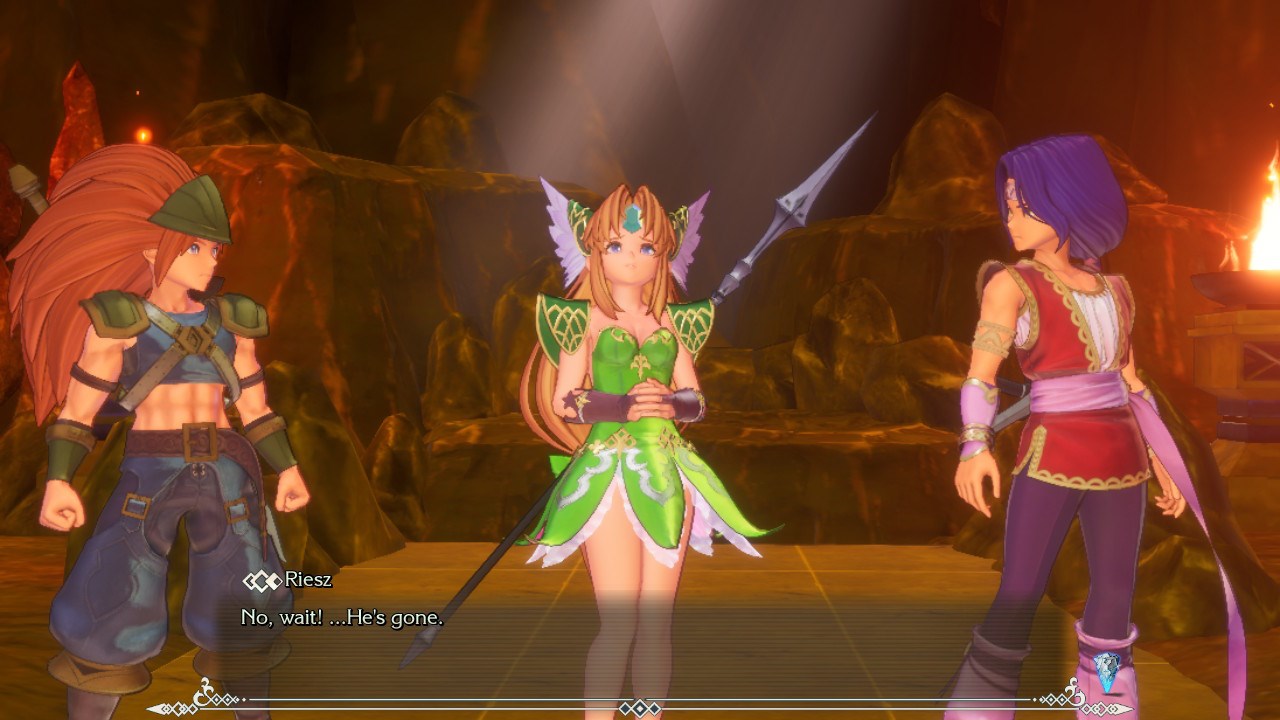
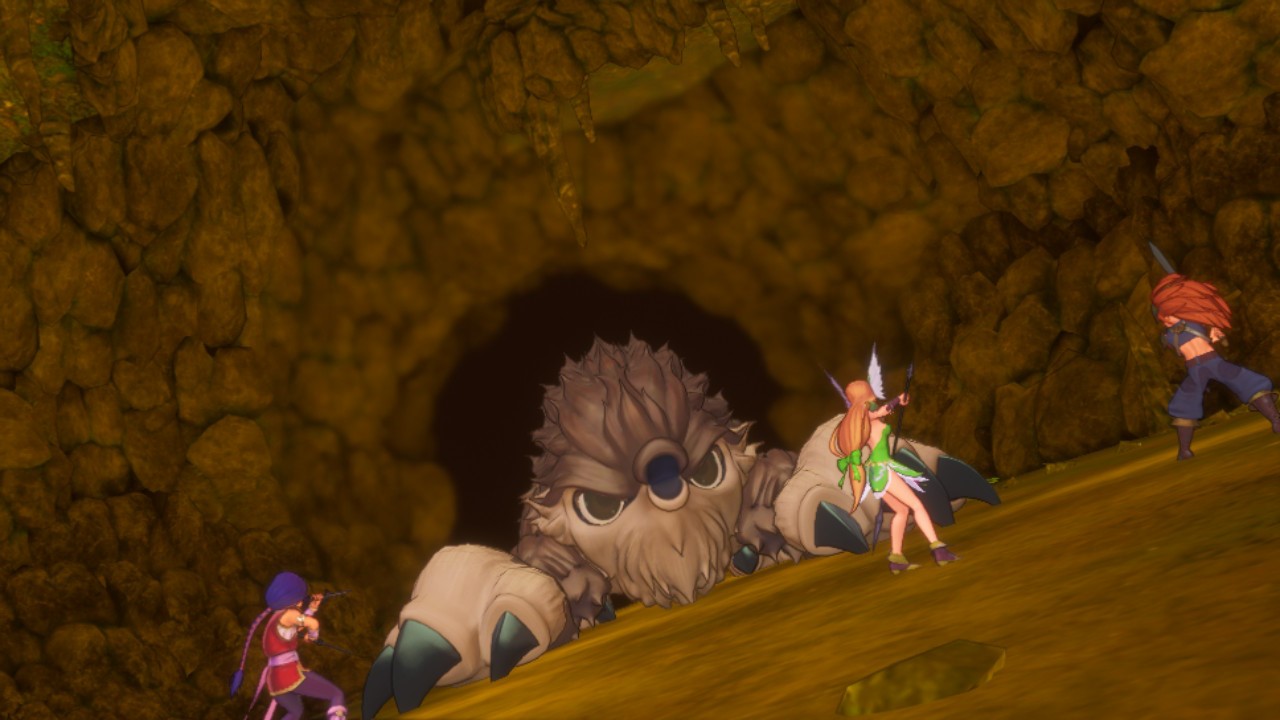





Published: May 4, 2020 12:57 pm